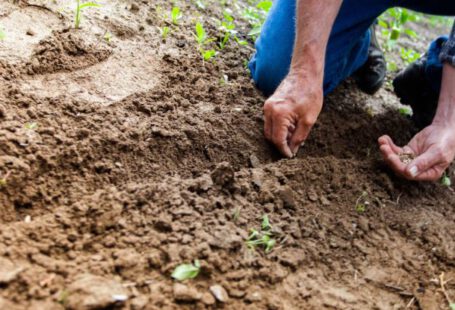Adding a pond to your backyard can transform your outdoor space into a tranquil oasis where you can relax and unwind. The sight and sound of water can create a calming atmosphere, attracting wildlife and providing a beautiful focal point for your garden. If you’re considering starting a backyard pond, there are several essentials you’ll need to ensure its success. From choosing the right location to selecting the appropriate materials, here’s a guide to help you get started on creating your own backyard paradise.
Selecting the Ideal Location
The first step in creating a backyard pond is selecting the ideal location for it. Choose a spot in your yard that receives a good amount of sunlight, as most aquatic plants thrive in sunlight. However, it’s also important to consider some shade to prevent excessive algae growth. Avoid placing your pond under trees, as falling leaves can cause water quality issues. Additionally, make sure the location is easily visible and accessible so you can enjoy the pond from various angles.
Determining the Size and Shape
The size and shape of your backyard pond will depend on the available space and your personal preferences. Smaller ponds are easier to maintain and ideal for beginners, while larger ponds can accommodate more fish and plants. Consider the scale of your garden and aim for a pond size that complements the surrounding landscape. As for the shape, you can choose from various options such as oval, kidney-shaped, or irregular shapes to add visual interest to your garden.
Choosing the Right Pond Liner
One of the most essential components of a backyard pond is the liner, which prevents water from seeping into the soil. There are several types of pond liners available, including PVC, EPDM rubber, and preformed liners. PVC liners are budget-friendly and easy to install, while EPDM rubber liners are durable and flexible, conforming to the shape of your pond. Preformed liners come in various shapes and sizes, making them a convenient option for beginners. Consider the size and shape of your pond when selecting a liner to ensure a proper fit.
Installing a Filtration System
Maintaining a healthy ecosystem in your backyard pond requires a reliable filtration system. A filtration system helps remove debris, excess nutrients, and waste from the water, keeping it clean and clear. There are various types of filtration systems available, including mechanical filters, biological filters, and UV clarifiers. Mechanical filters trap solid debris, biological filters support beneficial bacteria growth, and UV clarifiers eliminate algae and harmful pathogens. Choose a filtration system that suits the size of your pond and the amount of fish and plants you plan to have.
Adding Aquatic Plants and Fish
Aquatic plants and fish are essential components of a backyard pond, adding beauty and life to the water feature. Plants such as water lilies, lotus, and irises not only enhance the aesthetics of the pond but also provide shelter and food for fish and other wildlife. Fish like koi and goldfish are popular choices for backyard ponds, adding movement and color to the water. When adding plants and fish to your pond, consider the size of the pond, the water depth, and the local climate to ensure their well-being.
Enhancing the Aesthetics with Rocks and Decor
To create a natural-looking pond in your backyard, consider adding rocks, pebbles, and other decorative elements around the water feature. Rocks can be used to create a waterfall, stream, or edging for the pond, adding texture and visual interest to the landscape. Pebbles and gravel can be placed on the pond bottom to create a natural substrate for aquatic plants and fish. Additionally, you can add floating plants, statues, and lighting to enhance the aesthetics of your backyard pond and create a peaceful ambiance.
Maintaining Your Backyard Pond
Once your backyard pond is up and running, regular maintenance is essential to keep it healthy and beautiful. Monitor water quality parameters such as pH, ammonia, and nitrate levels regularly to ensure a balanced ecosystem. Remove debris, dead leaves, and algae from the water surface and bottom to prevent water quality issues. Prune aquatic plants as needed to maintain a healthy balance in the pond. Additionally, check the filtration system and pump regularly to ensure proper functioning. With proper care and maintenance, your backyard pond will continue to thrive and provide enjoyment for years to come.
In conclusion, creating a backyard pond requires careful planning and consideration of various essentials such as location, size, liner, filtration system, plants, fish, and decor. By following these guidelines and investing time and effort in the initial setup and maintenance of your pond, you can create a serene and beautiful water feature that enhances your outdoor space. With the soothing sound of water, the beauty of aquatic plants, and the charm of fish swimming gracefully, your backyard pond will become a focal point of your garden and a place of relaxation and enjoyment for you and your family.





